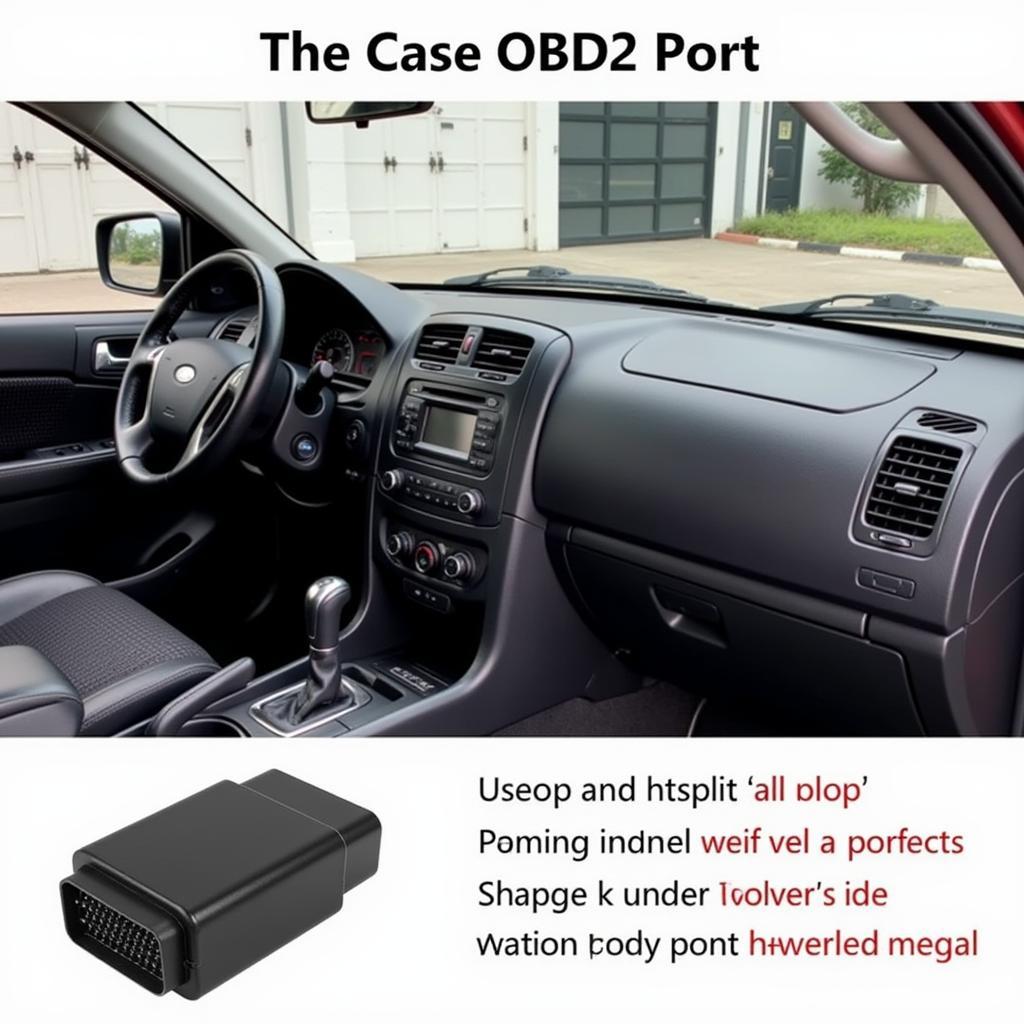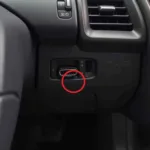The Isuzu On-Board Diagnostics system, more commonly known as OBD2, acts as your vehicle’s built-in mechanic. This sophisticated system constantly monitors your engine and other critical components, diligently tracking performance and flagging potential issues. When a problem arises, the OBD2 system illuminates a warning light on your dashboard, such as the notorious “Check Engine” light, providing a heads-up that something needs attention. But the OBD2 system does much more than just turn on warning lights. It stores valuable diagnostic information related to the potential malfunction, acting as a digital vault of clues. Accessing this treasure trove of data requires an OBD2 scanner, a device that translates your Isuzu’s cryptic codes into understandable language.
Demystifying Isuzu OBD2 Codes
Think of OBD2 codes as your vehicle’s way of communicating its woes. These codes, composed of a letter and four digits, aren’t meant to scare you but rather to provide a roadmap for diagnosing and repairing the issue. The letter in the code signifies the system affected:
- P: Powertrain (engine, transmission, and associated emissions systems)
- B: Body (components like power windows, air conditioning, and airbags)
- C: Chassis (elements such as the anti-lock brake system and steering)
- U: Network & Communication (issues within the vehicle’s communication systems)
The following four digits pinpoint the specific nature of the problem. For instance, a “P0301” code indicates a misfire detected in cylinder one.
Why You Should Care About Your Isuzu’s OBD2 System
“Knowledge is power,” and understanding your Isuzu’s OBD2 system empowers you as a vehicle owner. Here’s why:
- Early Detection & Prevention: By promptly addressing the issues flagged by the OBD2 system, you can prevent minor problems from escalating into major (and costly) repairs.
- Informed Repair Decisions: Knowing the exact problem through OBD2 codes equips you to discuss repairs confidently with mechanics and avoid unnecessary services.
- Improved Fuel Efficiency: A well-maintained vehicle, guided by OBD2 insights, often translates into better fuel economy and lower running costs.
Choosing the Right OBD2 Scanner for Your Isuzu
Selecting the appropriate OBD2 scanner for your Isuzu can be overwhelming given the wide variety available. Consider these key factors:
- Compatibility: Ensure the scanner explicitly states compatibility with Isuzu vehicles, including the model year of your car.
- Functionality: Basic scanners retrieve and clear codes, while advanced models offer real-time data, graphing capabilities, and even manufacturer-specific diagnostics.
- User-Friendliness: Opt for scanners with an intuitive interface, clear displays, and easy navigation for a hassle-free experience.
Common Isuzu OBD2 Codes and What They Mean
While the possibilities are numerous, some OBD2 codes tend to appear more frequently in Isuzu vehicles:
- P0420: Catalyst System Efficiency Below Threshold (Bank 1) – often indicates a failing catalytic converter.
- P0171: System Too Lean (Bank 1) – suggests an issue with the air-fuel mixture, potentially due to a vacuum leak or faulty sensor.
- P0300: Random/Multiple Cylinder Misfire Detected – can be caused by spark plugs, ignition coils, fuel injectors, or even a vacuum leak.
Expert Insight:
“It’s important to remember that OBD2 codes provide a starting point for diagnosis, not a definitive answer,” says John Miller, a seasoned mechanic with over 20 years of experience specializing in Isuzu vehicles. “Always consult a qualified mechanic to properly interpret the codes and conduct a thorough inspection.”
Beyond the Code: Troubleshooting Tips
When faced with an OBD2 code on your Isuzu, consider these steps before rushing to the mechanic:
- Check Your Gas Cap: A loose or damaged gas cap can trigger emissions-related codes. Tighten it securely or replace it if necessary.
- Inspect Air Filter: A dirty air filter can disrupt the air-fuel mixture. Check and replace it if it’s clogged.
- Examine Spark Plugs: Worn-out spark plugs can lead to misfires. If they are due for replacement, do so according to your vehicle’s maintenance schedule.
Taking Control of Your Isuzu’s Health
Understanding your Isuzu’s OBD2 system is like having a direct line to your vehicle’s health. By utilizing an OBD2 scanner, interpreting codes, and addressing issues promptly, you can maintain your Isuzu’s optimal performance, enhance its lifespan, and enjoy a smoother, more cost-effective ownership experience.
Frequently Asked Questions about Isuzu OBD2
1. Can I drive my Isuzu with the Check Engine light on?
While you technically can drive a short distance, it’s crucial to have the issue diagnosed and repaired as soon as possible. Ignoring the warning light could lead to further damage and more costly repairs down the road.
2. Will disconnecting the battery reset the OBD2 codes?
Temporarily disconnecting the battery might clear the codes and turn off the Check Engine light. However, the underlying issue persists, and the light will return once the OBD2 system runs its diagnostics again.
3. Do all OBD2 scanners work on all Isuzu models?
Not necessarily. Ensure the scanner explicitly states compatibility with your Isuzu’s model year and region.
4. Can I fix an OBD2 code issue myself?
While some fixes, like replacing a gas cap, might be within a DIY skillset, more complex repairs often require professional expertise and specialized tools.
5. How often should I scan my Isuzu for OBD2 codes?
It’s good practice to scan your vehicle for codes at least once a year or anytime you notice unusual performance or a dashboard warning light.
Need further assistance? Contact our dedicated support team via WhatsApp at +1(641)206-8880 or email us at cardiagtechworkshop@gmail.com. We’re available 24/7 to provide expert guidance and answer any questions you may have about your Isuzu’s OBD2 system.


